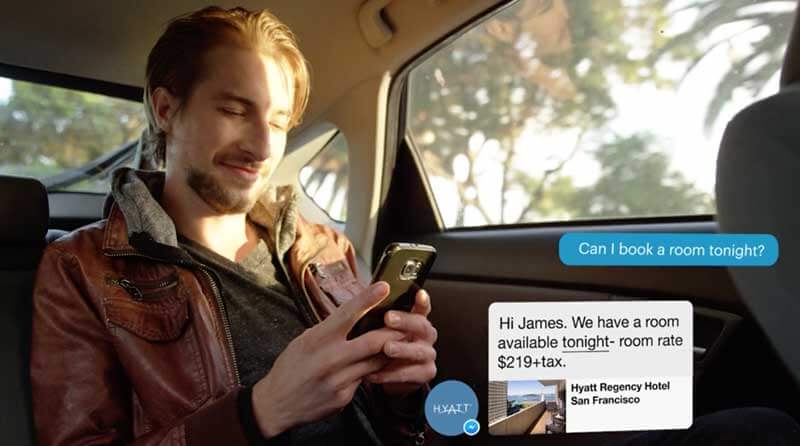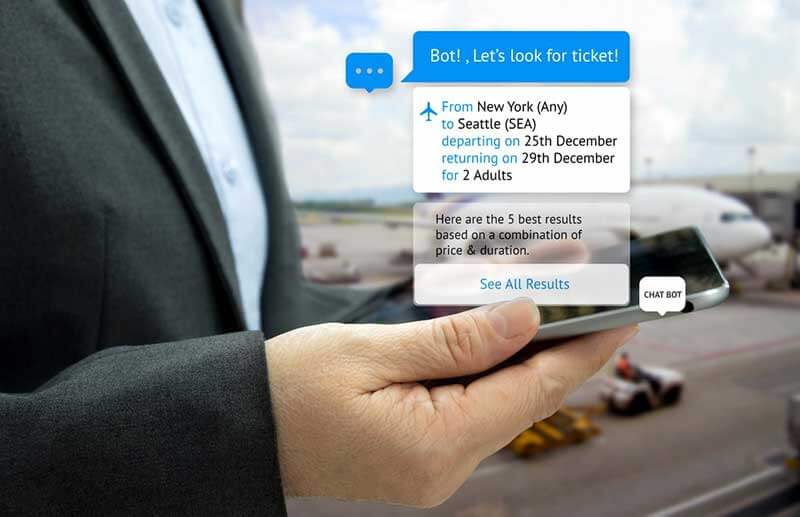- Chatbots mimic human interactions by picking up natural conversational flow
- They can serve as an expression of your brand and really bring it to life
- Chatbots can facilitate active and valuable engagement with customers
- Gathering insights directly from users is as easy as pie
- As chatbot tech matures, marketing possibilities will continue to grow
In the 2000s, marketing was largely dominated by Search Engine Optimisation and Search Engine Marketing. In the beginning of the 2010s, we witnessed the rise of social media marketing, and later on mobile marketing. Today, marketing is all about messaging, with consumer communication steadily migrating from social networks to platforms like WhatsApp, Facebook Messenger, Apple iMessage, Snapchat, Slack, and WeChat. With this shift to messaging platforms, the utilisation of chatbots has steadily gained momentum over the past couple of years. Not only do these nifty pieces of technology take customer experience and convenience to a whole new level, they’re great for business, too.
Chatbots mimic human interactions by picking up natural conversational flow
A chatbot is a computer program, a machine learning algorithm with natural language processing (NLP) capabilities. It consists of different layers for collecting and analysing data. Each layer is made up of a network of artificial neurons that are responsive to each other. Chatbots are created to communicate directly with the customer. They learn from the information they come across and the data they’re fed to provide relevant and efficient responses. The NLP allows them to mimic human interaction by picking up natural conversational flow. Because today’s sophisticated bots are designed to simulate how a human would respond as a conversational partner, they can help customers select products and services, answer FAQs, and provide customer support or after-sales service. A chatbot can basically mimic the kind of retail experience you would have if you were in a brick-and-mortar store. Properly implemented, chatbot technology can really pay off in marketing. Examples of chatbots we already use on a daily basis are Microsoft’s Cortana, Apple’s Siri, Amazon’s Alexa, and Google’s Assistant.

Only a few years ago, talking to a chatbot would very obviously be exactly that. But chatbot programming is becoming increasingly sophisticated and it’s becoming more difficult to tell the difference between a chatbot and a human. You may even have experienced it yourself, thinking the voice on the other end during an online support chat with your insurance company belonged to a human assistant, while in actual fact, you were having a conversation with artificial intelligence.
Chatbots can serve as an expression of your brand and really bring it to life
You can imagine how valuable chatbots could be in marketing and branding, especially because traditional branding is pretty much one-directional. Think billboards, banner ads, TV commercials, and videos. But a chatbot can infuse personality and humour into interaction with consumers and even have a ‘real’ conversation about your brand. A great example of a ‘branded bot’ is the KalaniBot, a chatbot based on the hugely popular 16-year-old American dancer, model, and TV personality Kalani Hilliker. The bot was created by the influencer marketing platform The Amplify and the chatbot developer Automat, and released at the end of 2016 for CoverGirl cosmetics. To define Kalani’s persona, the chatbot analyses and simulates her conversational style. Ms. Hilliker – who has over 3 million Instagram followers – says about the bot: “She thinks she’s *actually* me lol”. The bot learns new fan interactions every day and gets smarter as it learns. It chats with fans about makeup, answers questions, and provides information on special promos. CoverGirl has already reported that positive response to the KalaniBot has been over 90 per cent, and half of the fans who interacted with the bot have received product coupons. What’s important for CoverGirl are the metrics the bot provides, such as engagement levels and chat conversations that lead to sales.
According to Justin Rezvani, founder and CEO of The Amplify, the company will be able to create bots for influencers that go way beyond makeup as a topic. “The whole point is that what we are doing is not a scripted experience. It’s a whole platform that allows us to build bots and develop a meaningful dialog around products.”
Chatbots can facilitate active and valuable engagement with customers
In traditional marketing and advertising, playing a video or clicking on an ad is defined as ‘engagement’. But chatbots enable active conversations with customers, providing much more involved, real-time engagement. A great example of how well these types of next-generation digital experiences work is the Officer Judy Hopps bot on Facebook Messenger, created by Disney. The bot was launched to get the audience excited for the release of the blockbuster movie Zootopia. In a detective game based on the movie, the Hopps bot had ‘personal’ interactions with fans. Because users were so impressed, they shared their positive experiences far and wide, and audience engagement was off the charts. By the end of the 16-day period the bot was active, it had exchanged millions of messages. This type of interaction provides users not only with an in-depth experience of a brand, but also provides entertainment and value – something that’s hardly ever the case with traditional advertising.

Gathering insights directly from users is as easy as pie
Because users interact with chatbots in very personal ways, much like they do with friends and family, chatbots are able to ask much more personal questions as well – questions that would normally be intrusive, irritating, or strange coming from a company or brand. These can range from ‘What music do you like?’ and ‘Where do you live?’ to ‘Where do you like to go on holiday?’. The answers to these questions provide valuable data that can be referred back to in follow up conversations, and offer ways to further personalise the experience the customer has with the brand. Chatbots can, for instance, offer special discounts on a customer’s birthday, or recommend a great swimsuit for that holiday next month. Of course, this also raises privacy concerns, and companies will need to find a balance between privacy and their quest for increasingly extreme personalisation.
As chatbot tech matures, marketing possibilities will continue to grow
As the technology becomes more sophisticated, the possibilities and benefits of chatbots – both for marketing and for customer experience – will continue to expand. In the near future, chatbots will have the ability to handle hundreds of different types of – intelligent – conversations that closely resemble human interaction, engaging audiences on a whole new level. They can tell your brand’s story like never before, and enable you to serve your customers in ever more personalised ways, all the while growing your business – one chat at a time.
Share via:


